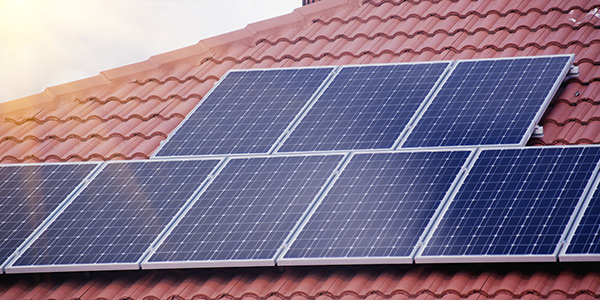New Jersey’s Board of Public Utilities released a proposal Thursday to restructure the solar development and incentive programs to help the state meet its goal of quadrupling solar energy capacity to 17.2 GW by 2035.
Known as the Solar Successor Program, the straw proposal outlines a two-tier system designed to introduce more competition into the development of large solar projects. It does so, in part, by setting up solicitation processes for different categories of projects larger than 2 MW, such as basic grid supply projects or built-environment projects such as rooftops.
Projects smaller than 2 MW would be encouraged with fixed-rate incentives to provide consumers and financers a “clear understanding of the expected value of the incentives associated with each MWh of generation by a given project.” The BPU will solicit public and stakeholder input at four hearings and a board meeting to be held between April 21 and May 3.
The 60-page proposal says the finished plan would be the final step toward creating “a long-term, durable solar incentive program” that helps the state meet its solar energy goals and “supports a thriving and stable solar industry,” while also protecting ratepayers.
Future Growth
The state initially reassessed its solar incentive programs in 2018 at the direction of Gov. Phil Murphy, who has set a goal of 100% clean energy by 2050. Murphy wants the solar sector, which currently has a capacity of 3.5 GW, to generate 32 GW by 2050.
With 130,000 residential solar installations and more than 7,390 net-metered commercial and industrial projects totaling 1,695 MW, New Jersey is ranked seventh in the country for installed solar capacity. In January, the state’s first community solar project came online, as part of a pilot program designed to spark development of community solar. With several projects online, the first phase is designed to install 78 MW of energy, and a second phase is expected to add projects totaling 150 MW. (See Billing Key to NJ Community Solar Growth.)
Vote Solar, a national advocacy group for solar energy, welcomed the new proposal and the opportunity to further shape it.
“A robust and equitable solar successor program is critical for attaining New Jersey’s clean energy goals and rebuilding the economy after the pandemic,” said Elena Weissmann, regional director for the Mid-Atlantic region. “As always, the devil is in the details. We’ll continue to advocate for incentives and requirements that ensure solar deployment and its associated benefits serve New Jersey’s overburdened and environmental justice communities.”
Vying for Approval
The search for a modified path forward began with Murphy’s signing of the Clean Energy Act in 2018. The law required the BPU to shut down its Solar Renewable Energy Certificate (SREC) Program when solar installations reached 5.1% of the state’s electricity sales, in part, because it was seen as unnecessarily expensive and the values of SRECs were volatile.
The program hit the 5.1% threshold in April 2020, and the BPU’s replacement program kicked in, awarding Transition Renewable Energy Certificates, which have a fixed value that depended on the project.
Elements of that program remain in the latest proposal, in the guidelines for projects smaller than 2 MW. The transition program will remain in effect until the Solar Successor program is in place.
Explaining the rationale behind the proposal, the BPU said state incentives needed to be “sufficiently robust to rapidly expand upon the existing 3.5 GW of installed solar and quickly scale new solar generation to approach these goals.”
In the case of utility-scale, “grid supply” projects and net-metered nonresidential projects above 2 MW, an annual competitive solicitation process would create cost-based competition for projects in different categories such as commercial rooftop projects or landfill or brownfield projects.
“The model has the potential to significantly expand market segments, such as grid supply on warehouse rooftops and other types of grid supply projects, that have thus far been limited by administrative or regulatory barriers,” the proposal says.
Fixed Incentives
Behind-the-meter projects of 2 MW or less, including residential off-grid projects, and community solar projects, would receive a fixed incentive set by the BPU, according to the proposal. Payments for each megawatt hour of solar electricity produced would vary depending on the project type, such as ground mount, rooftop or canopy. The program would set out a fixed, guaranteed term for incentive payments to provide developers with the stability needed to finance projects.
The BPU said the agency staff believes that the system would be easy to understand and “implementable in a short time frame.” It also would give the BPU board the ability to adjust the incentive levels, while providing “an incentive structure that is both fixed and known in advance and provides a low-risk incentive structure for developers, thereby encouraging investment of at-risk private capital.”
Jeff Tittel, director of the New Jersey Sierra Club, said the proposal is a “step in the right direction,” but needs some adjustment. He said the threshold of 2 MW for off-grid residential projects that do not feed electricity into the grid is too low, and larger projects should be allowed in that category.
“We think the numbers should be larger to allow for more solar like that,” he said, suggesting projects up to 10 MW should be eligible for the program.




